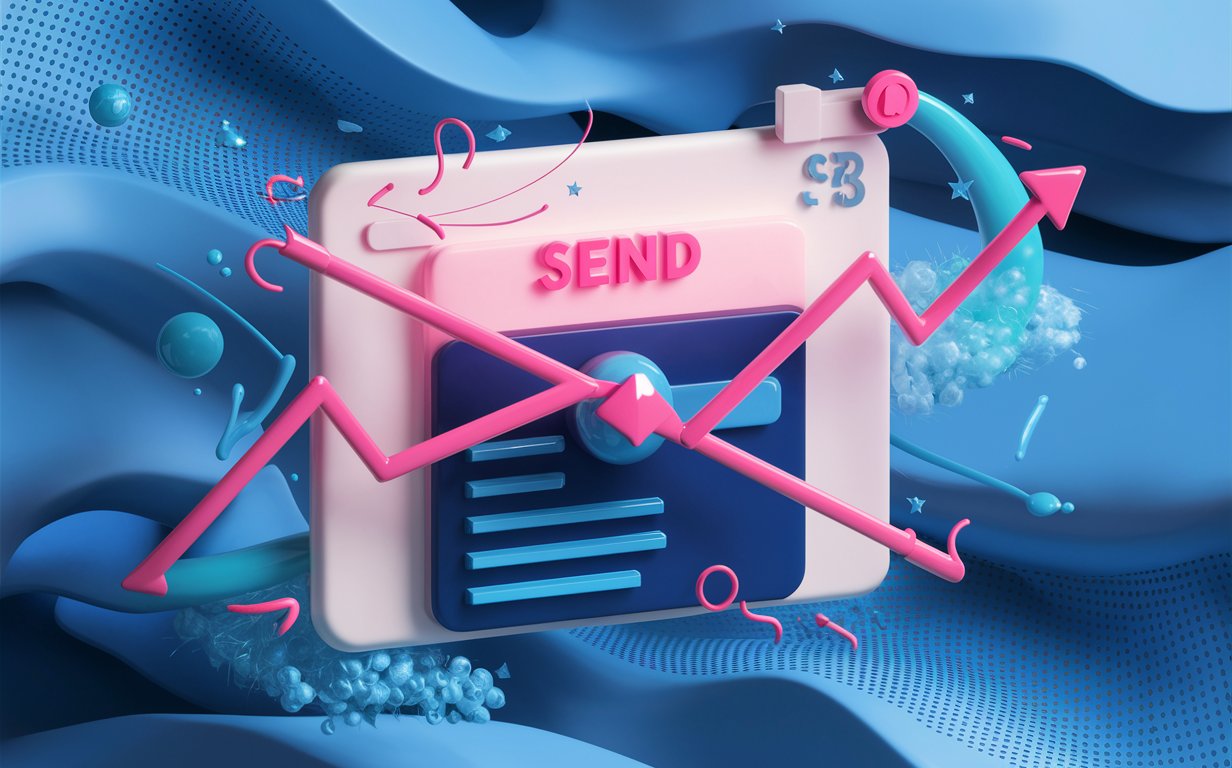Writing an email to a professor can be a daunting task, especially when you need to strike the right balance between professionalism and clarity. Whether you’re reaching out for academic advising, clarifying a course requirement, or seeking a recommendation letter, the way you end an email is just as important as how you start it. In this article, we’ll dive into the nuances of email etiquette when communicating with professors, with a special focus on Purdue University. By the end of this guide, you’ll know how to end an email to a professor that leaves a positive impression and helps you achieve your academic goals.
Understanding the Basics of Email Etiquette
When you’re sending an email to a professor, it’s crucial to adhere to proper email etiquette. This is not only about being polite but also about ensuring that your message is clear, concise, and respectful. Many professors receive dozens of emails daily, so making sure yours stands out—in a good way—is essential.
Email etiquette involves knowing how to address your professor, understanding the appropriate language to use, and being mindful of the professor’s time. For instance, you should avoid overly casual greetings like “hi” or “hey” and instead opt for a more formal salutation such as “Dear Professor XYZ” or “Hello Professor ABC.”
It’s also important to avoid making assumptions about your relationship with your professor. Even if you feel you have a good rapport, maintaining a professional tone in your email is key to ensuring your request is taken seriously.
The Importance of an Effective Subject Line
The subject line is the first thing a professor sees when you send an email. It’s crucial to make it specific and relevant to the content of your message. For instance, instead of a vague subject like “Question,” try something more specific, such as “Question Regarding Next Week’s Assignment” or “Request for Academic Advising Appointment.”
A clear subject line not only helps the professor know what to expect but also ensures your email is noticed amidst the many others they receive. It’s a small detail, but it can make a big difference in how your email is perceived.
How to Address Your Professor Properly
Addressing your professor correctly is a fundamental part of writing an email to a professor. Using “Professor” followed by their last name is generally the safest bet unless they have indicated a preference for something else. If you’re not sure of their title, “Professor” is usually a safe choice.
Using the wrong title or getting the professor’s name wrong can come across as careless and may take offense. For example, avoid using “Mr.” or “Mrs.” unless you are certain it is appropriate, as these titles do not reflect their academic status.
It’s also a good idea to include your full name and the course you’re enrolled in, especially if you’re emailing a professor for the first time. This helps them quickly identify who you are and which class you’re referring to, making it easier for them to respond.
Crafting the Body of Your Email: Clarity and Politeness
The body of your email should be concise but informative. Start with a polite greeting like, “I hope this email finds you well,” followed by a clear statement of your reason for emailing. Whether you’re asking a question, requesting a meeting, or needing help with an assignment, state your purpose early on.
For example, if you need to clarify something from class, you might write: “I’m writing to ask for clarification on the project very interesting that we discussed in class next week. I found the summary of the project very interesting and would greatly appreciate it if you could help me better understand the requirements.”
Being polite and direct will help ensure that your email is well-received. Remember to proofread your email before sending it to avoid any errors that could make your message seem less professional.
The Significance of Showing Gratitude and Respect
Showing gratitude in your emails is an important aspect of email etiquette. Whether the professor has already helped you or you’re anticipating their assistance, a simple “thank you” goes a long way. You can end your email with phrases like, “Thank you for your time and consideration,” or “I greatly appreciate your help with this matter.”
Including a sign-off that reflects your appreciation can help build a positive relationship with your professor. It’s a small gesture that shows you value their time and effort, which is important, especially when many professors have packed schedules.
Choosing the Right Email Endings: Sign-Offs and Salutations
The end of an email is just as important as the beginning. An appropriate sign-off sets the tone for your relationship with the professor and leaves a lasting impression. Common ways to end an email include phrases like “Sincerely,” “Best regards,” or simply “Best.”
If you’re not sure which sign-off to use, “Sincerely” is a safe choice. It’s formal enough for academic correspondence while still being friendly. If you’ve already established a rapport with the professor, you might opt for a slightly less formal ending like “Best regards” or “Best wishes.”
Regardless of the sign-off you choose, always include your full name after it. This is especially important if you’re emailing a professor for the first time, as it helps them quickly identify who you are.
Why the Reason for Your Email Matters
The reason for your email should be clearly stated in the body of your email. Whether you’re requesting academic advising, asking a question about an assignment, or seeking a recommendation letter, being clear about your needs will help the professor provide you with the appropriate assistance.
For example, if you’re emailing to request a meeting during office hours, you could write: “I’m writing to request a meeting during your office hours next week to discuss my academic goals. I would greatly appreciate it if we could meet at your earliest convenience.”
By clearly stating your reason for emailing, you’re making it easier for the professor to understand what you need from them and to respond accordingly.
Maintaining a Professional Tone Throughout Your Email
Maintaining a professional tone is crucial when writing an email to your professor. This means avoiding slang, overly casual language, or anything that might come across as disrespectful. Even if you have a friendly relationship with your professor in person, it’s important to keep your emails professional.
A professional email should be well-structured, with a clear introduction, body, and conclusion. It should also be free of typos and grammatical errors, as these can detract from the professionalism of your message. Taking the time to proofread your email before sending it shows that you care about the impression you’re making.
Common Mistakes to Avoid When Writing an Email to a Professor
There are several common mistakes that students make when figuring out when and how to end an email to a professor. One of the biggest mistakes is not proofreading your email before sending it. Typos, misspellings, and grammatical errors can make your email seem rushed and unprofessional.
Another common mistake is using an overly casual tone or addressing the professor too informally. Remember, even if you have a good relationship with your professor, it’s important to maintain a level of professionalism in your emails.
Finally, be sure to check that you’ve used the correct title and spelled the professor’s name correctly. Getting the professor’s name wrong or using the wrong title can come across as disrespectful and careless.
The Importance of a Follow-Up Email
If you haven’t received a response to your email after a reasonable amount of time, it’s appropriate to send a follow-up email. A follow-up email should be polite and respectful, acknowledging that the professor may be busy.
For example, you might write: “I hope this email finds you well. I’m following up on my previous email regarding our meeting. I understand you have a busy schedule and would greatly appreciate it if we could arrange a time to meet at your earliest convenience.”
A follow-up email shows that you are proactive and serious about your request. It also gives the professor another opportunity to respond if your initial email was overlooked.
Tips for Writing Emails to Professors at Purdue University
So, how to end an email to a professor? When emailing professors at Purdue University, or any academic institution, it’s important to follow the same guidelines for professionalism and clarity. However, you might also want to be aware of specific expectations or cultural norms at the university.
For example, Purdue University places a strong emphasis on clear and respectful communication. This means that your emails should be well-organized, with a clear subject line, a polite greeting, and a concise body that clearly states your reason for emailing.
It’s also a good idea to be mindful of the professor’s time. If you’re requesting a meeting, try to suggest times that align with their office hours or ask when it would be most convenient for them. Showing that you respect their time and are willing to be flexible can help make a positive impression.
Myth Busting: Clearing Up Common Misconceptions About Emailing Professors
When it comes to emailing a college professor, there are several common myths that can lead to misunderstandings and less effective communication. In this segment, we’ll bust three of these myths and provide you with the correct information to help you start sending emails that are both respectful and productive.
Myth 1: It’s Okay to Start an Email with “Hi” or “Hello” Instead of “Dear Professor”
Many students get confused about how to address their professors in emails. Some believe that starting an email with a casual “Hi” or “Hello” is perfectly acceptable, especially if they have a good relationship with their professor. However, this is a misconception.
Reality: While using “Hi” or “Hello” might seem friendly, it can come across as too informal, especially in academic settings. The best way to address a professor in an email is by using “Dear Professor” followed by their last name. This approach is more respectful and aligns with professional email etiquette. For example, “Dear Professor Smith” is an appropriate and respectful way to start your email.
Myth 2: The Sign-Off “Thanks” or “Best” is Always Appropriate
Another common myth is that it’s always fine to end an email with a casual sign-off like “Thanks” or “Best.” Some students believe that as long as they express gratitude or a positive sentiment, the exact wording doesn’t matter.
Reality: While “Thanks” and “Best” are popular sign-offs, they may not always be the most appropriate choices when emailing a professor. In a professional setting, using a more formal sign-off such as “Sincerely” or “Best regards” is often more suitable. These sign-offs convey respect and professionalism, which are crucial when communicating with a college professor. Additionally, after your sign-off, always sign your full name to make it clear who is sending the email.
Myth 3: You Can Use Your Personal Email Account for All Academic Correspondence
Some students believe that it’s perfectly fine to use their personal email account for all communication with their professors, assuming it doesn’t make a difference as long as the message is polite and well-written.
Reality: It’s highly recommended to use your university-provided email account when emailing professors. Using your academic email account ensures that your emails are recognized as official communication and helps prevent them from being overlooked or filtered as spam. Professors may also expect to receive emails from your university email account, as it is linked to your student records and helps them easily identify you.
Why These Myths Matter
Understanding and avoiding these myths can make a significant difference in how your emails are received and how effectively you can communicate your needs to your professors. Whether you’re joining the lab for a new research project, seeking help with academic advising, or simply need an answer to a class-related question, knowing the correct email etiquette will help you maintain a professional relationship with your professors and ensure your communication is clear and effective.
By following these guidelines, you’ll be better equipped to send emails that leave a positive impression and help you achieve your academic goals. So, the next time you’re sending the email, remember to start with “Dear Professor,” sign off with a formal phrase like “Sincerely” or “Best regards,” and always use your university email account to ensure your message is taken seriously.
Similarities and Differences: Understanding Key Aspects of Email Etiquette with Professors
When emailing a professor, there are several key aspects of etiquette that students need to be aware of. While some elements of email communication share common principles, there are also important differences that can influence how your message is received. In this segment, we’ll explore five main points of comparison to help you better understand the nuances of email communication with professors.
1. Greetings: “Dear” vs. “Hello” vs. “Hi”
Similarities: All three greetings—“Dear,” “Hello,” and “Hi”—are common ways to start an email, and they all serve the purpose of initiating communication. Each of these greetings is used to acknowledge the recipient at the beginning of an email, setting the tone for the rest of the message.
Differences: The level of formality differs significantly between these greetings. “Dear” is the most formal and is highly recommended when emailing a professor. It shows respect and acknowledges the academic setting. “Hello” is less formal and can be used in more casual or familiar contexts, but it’s not the best choice when you need to email a professor, especially if you’re communicating with them for the first time. “Hi” is the most informal and should be avoided in academic emails as it may come across as too casual or disrespectful.
2. Sign-Offs: “Sincerely” vs. “Best Regards” vs. “Best”
Similarities: “Sincerely,” “Best regards,” and “Best” are all commonly used sign-offs in email communication. They all function to close an email politely and respectfully, ensuring that the communication ends on a positive note.
Differences: The level of formality again varies between these sign-offs. “Sincerely” is the most formal and is ideal when you need to maintain a professional tone, such as when you’re concluding your email to a professor for the first time or in important academic correspondence. “Best regards” is slightly less formal but still appropriate for academic emails, especially if you have an established relationship with the professor. “Best” is the most casual and should be used cautiously, as it might be too informal for certain academic contexts.
3. Expressions of Gratitude: Simple “Thank” vs. “Thanks” vs. Showing Appreciation
Similarities: All three—simple “thank,” “thanks,” and other expressions of appreciation—are used to convey gratitude in an email. They acknowledge the recipient’s time and effort, which is crucial in maintaining a respectful tone in academic communication.
Differences: A simple “thank” or “thanks” can be effective, but they carry different tones. “Thanks” is more casual and is appropriate for informal settings or when you’re familiar with the professor. However, when expressing gratitude in a more formal email, it’s better to use a phrase like “Thank you for your time” or “I greatly appreciate your assistance.” This more detailed expression shows a higher level of respect and consideration, which is particularly important when you need something from the professor or when you’re sending the email in a more formal context.
4. Timing: “Good Evening” vs. “Good Morning” vs. “Earliest Convenience”
Similarities: “Good evening” and “Good morning” are both time-specific greetings that help set the tone of your email, and they are both used to acknowledge the time of day when the email is sent. Meanwhile, phrases like “earliest convenience” are used to indicate timing when you are requesting something from the professor.
Differences: “Good evening” and “Good morning” differ in their appropriateness depending on the time of day. It’s important to use the correct greeting based on when you’re sending the email. However, both can be seen as slightly formal and are suitable for academic emails. On the other hand, “earliest convenience” is used to express urgency or a preferred timing for a response or action. It is not a greeting but a polite way to ask the professor for a timely response without being demanding. Using this phrase can help communicate your needs respectfully, especially if you need an answer before the coming Monday or within a specific timeframe.
5. Content Specificity: What You “Need from the Professor” vs. General Queries
Similarities: Both approaches involve requesting information or assistance from the professor, and they both require clear communication. Whether you are making a specific request or asking a general question, your email should be polite and well-structured.
Differences: When you “need something from the professor,” your email should be direct and specific about your request. For example, if you need academic advising or assistance with understanding a course requirement, clearly state what you need in your email and why it’s important. On the other hand, if you’re sending a general query, your email might be broader, and it could be less urgent. It’s important to distinguish between these types of requests because a specific need often requires a more detailed explanation and possibly a faster response, while general queries can be more flexible in terms of timing and detail.
Conclusion: Balancing Formality and Clarity
Understanding the similarities and differences in how you structure your email to a professor can greatly improve your communication. Whether it’s choosing the right greeting, sign-off, or timing for your email, or being clear about what you need from the professor, these distinctions are important for maintaining professionalism and ensuring your email contains all the necessary information. By considering these factors, you can write more effective emails that help you achieve your academic goals while respecting your professor’s time and effort.
Conclusion: Key Takeaways for How to End an Email to a Professor
Wondering how to end an email to a professor? It can be a straightforward process if you follow the right guidelines. Here are the most important points to remember:
- Subject Line: Use a clear and specific subject line to help your email stand out.
- Salutation: Address your professor formally using their correct title and last name.
- Body of the Email: Be concise, polite, and clear about the reason for your email.
- Gratitude: Show appreciation for the professor’s time and consideration.
- Sign-Off: Choose an appropriate sign-off and include your full name.
- Proofread: Always proofread your email before sending it to avoid mistakes.
- Follow-Up: If you don’t receive a response, send a polite follow-up email.
By following these guidelines, you now know how to end an email to a professor that is professional, respectful, and effective in achieving your academic goals. Whether you’re seeking academic advising at Purdue University or simply need to clarify an assignment, knowing how to write emails properly is an essential skill that will serve you well throughout your academic career.




